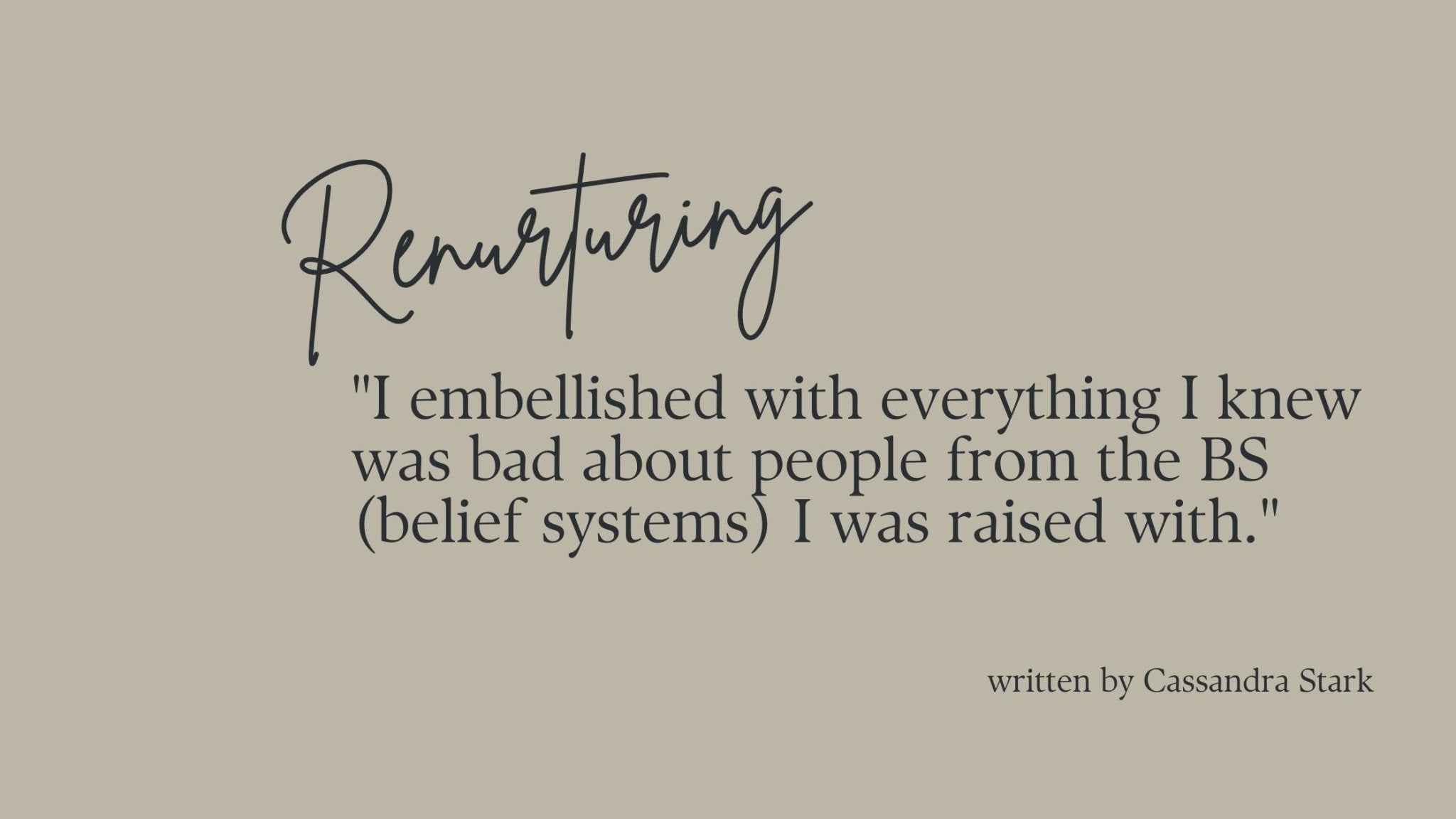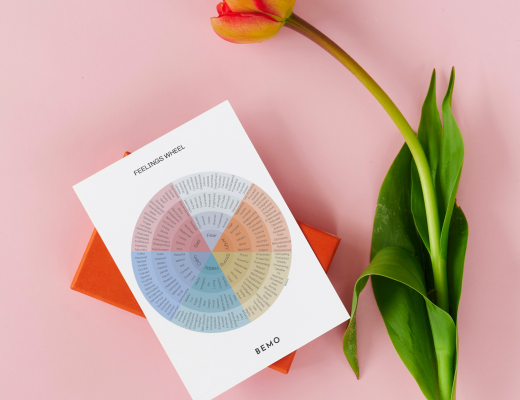In the complex landscape of relationships, conflicts are integral elements that, when navigated mindfully, can significantly deepen and strengthen the bond between partners. In other words, conflict is Needed. Our differences allow us to form greater connections and feel cohesive in our togetherness without the resentments caused by codependency by losing ourselves in relationship dynamics.
The BeMo Practice, centered around the FUNCK methodology, provides a comprehensive blueprint for engaging in meaningful conversations, resolving conflicts with empathy, and fostering a resilient connection built on mutual understanding and respect.
Understanding the Role of Conflict in Relationships
Conflict is, in fact, a natural and healthy aspect of any dynamic partnership and does not need to be a pivotal decision point or fracture in the relationship or communication. It's the approach to resolving these conflicts that determines the strength and longevity of the relationship. Yet many couples, often the ones that appear healthiest and most in sync, are left wondering how. Somewhere between a joke and an angry outburst, we may give the traditional therapy-style conversation a try: I feel ____ when you _____. If you've ever given this back-and-forth a try, you'll soon discover that this type of conversation requires mediation such as with a couples therapist and doesn't often feel like true or satisfying communication. So, let's learn how to transform potential fractures into opportunities for growth and deeper connection. Before we begin, I want to point out that just as The BeMo Practice states that working through the FUNCK is both for bad days (feeling funky) and good days (disco funky!), as you work through the hard times remember to express those FUNCK-E good moments as well. The key is to share.
Allow this post to help meet your Need for: togetherness, sharing, communication, connection, and learning.
Voice your Needs and effectively speak through the FUNCK in all types of relationships: friendships, family, colleagues, significant others, and children. In this example, we are going to utilize a romantic partnership between significant others.
The FUNCK Methodology: A Compass for Relationship Conversations
When relationship conversations veer into the territory of potential conflict or deep emotional sharing, the FUNCK methodology offers a structured approach to navigate these discussions with empathy, clarity, and a focus on mutual growth.
Don't feel like doing anything about it? I get that. This is perhaps the most draining and terrifying state of any relationship. Highly conflicting conversations or days filled with laughter don't necessarily feel hard to handle or communicate often because these far sides of positive or negative emotion already harbor behaviors and reactions that we believe are working for us. If you find yourself in a neutral state within your relationship, this can be one of the hardest times to handle. Finding complacency between two people can feel threatening to the point of causing further neutrality through avoidant behaviors. This feels like you're starting to live separate lives and often sounds like threats of, "We're just roommates!" Nobody wants to say that. Nobody wants to Feel that. So, when I say to utilize this practice of speaking FUNCK for potential conflicts and deep emotional sharing Know that this is a new and healthier way of avoiding conflict; this is a proactive way of meeting your Needs and finding a compromise of the Needs you share in order to avoid cycles of outbursts and breakdowns in communication.
While you may not feel like you need deep emotional sharing or you may feel discouraged at your lack of desire to do "anything about everything" please Know that speaking through your FUNCK is an effective tool in releasing yourself from feeling powerless and uninvolved. It is ok to start simple, with less vulnerability. If you find yourself triggered even by starting small, take note of the triggering moments where you feel the desire to get big with your emotions (anxious/disorganized) or shut them down (avoidant/disorganized) in order to protect yourself. Know that you Can give yourself 5-10 minutes to reflect with your BeMo Journal on the why. For example, was it really the discussion about help with laundry or fixing the porch light that triggered you? Try to look beyond the you statement or blame of what someone didn't do for you and ask yourself to go deeper. What did this situation remind you of? Where did you learn the reactive words or behaviors that wanted to surface in that moment?
Show yourself compassion and let your partner see that you are working hard on yourself. Give your significant other the freedom to do the same in their own way, in their own time.
Starting The Conversation
Initiating a delicate conversation about relationship dynamics necessitates timing, empathy, and mutual readiness. A gentle inquiry like, "Is now a good time to discuss something important about us?" can pave the way for an open, productive dialogue, emphasizing the value you place on the relationship and collective growth. If this feels to out of the ordinary, again, start small. Maybe practice sharing your day or discussing something outside of yourself.
When opening a conversation, always begin with a mutual Need for kindness and consideration. I find the best way to do this is to set the tone by acknowledging how your significant other HAS shown up for you and met your Needs. Acknowledge what Need was met and what that looked like. Be specific.
For example, Thank you so much for being home with us today. We really enjoy spending time with you. Even when you're busy, it is nice to have you around. Being able to make you a coffee or give you a smile meets my Need for showing love and care. I appreciate that.
Society likes to label men as the logical ones - needing to know what to do and exactly how to do it and why. Truth is, this is just human nature. We all have a need for Knowing - for clarity, understanding, and the empowerment. By voicing your Need and being specific about what that looks like when it is/isn't fulfilled, you're giving the gift of sharing your emotional toolbox with your significant other. You're showing what you Need while also allowing yourself to Know that there are multiple ways in which your Needs Can be met, starting from within.
Here's a little "You Note" for you: Be yourself. Use words that are natural to you when you're in a calm, grounded, and secure state. Start with kindness and mutual consideration. Given With Love, From BeMo
Now, let's continue. Here's how to begin speaking FUNCK.
1. Feelings: Sharing Emotions with Honesty
Begin by articulating your feelings without resorting to blame. Utilize "I feel" statements and avoid "I am" or "You are" statements. Express how specific situations impact you emotionally.
This sounds like: "I feel distant when we don't have quality time together."
Yes, this is reminiscent of the worksheet your couples therapist gave to you, but unlike that worksheet, we're not going to get high-ended on sharing feelings alone. We are going to take action, together and allow each other to be seen, heard, and Known.
After sharing how you feel, continue with a compassionate and understanding You Note.
2. Understanding: Cultivating Empathy
Strive to understand your partner's perspective. See your partner. This step allows you to create a safe space for both of you to share and feel heard.
This sounds like: "I understand that work has been overwhelming, and I appreciate your efforts."
3. Needs: Clarifying Personal Needs
Communicate your Needs clearly, focusing on how both partners can contribute to fulfilling these Needs. Take care to word your "Need for..." and drop the narrative around "need to..." Expressing your need to's runs the risk of creating a codependent conversation - easily breaking down into "You need to/I need to" statements and building resentment. Forcing yourself to action without reflecting on Need for's and making a conscious Choice will result in burn out on yourself and the relationships you have.
This sounds like: "I have a Need for connection and togetherness."
Now, allow your partner to share in the FUN, invite your partner to express their perspective using the same framework - fostering a balanced exchange of Feelings, Understanding, and Needs. Utilize the correlating BeMo Feelings & Needs Wheel to help articulate and identify the Needs that you have.
4. Cans: Identifying Collaborative Actions
Openly acknowledge the Needs that have been shared (by one or both of you). Discuss actionable steps both partners can take to address the expressed Needs, emphasizing shared efforts and willingness to adapt. This is a great step to express what fulfilling your Need looks and feels like to you.
This sounds like:
- "Fulfilling my Need for togetherness Can look like going on a regular date night, being asked how my day was, finding an activity we love to do together, and being kissed more often." or
- "Can we plan a regular time just for us?" or
- "We can schedule a date night each week to ensure we're dedicating time to us."
Show, ask, and list as many possibilities as possible. Get silly with your answers. Lighten the mood with Choices that are different from anything you've ever tried, such as, "We Can build a fort and eat spaghetti from pillows on the floor." Sounds silly, but often it is those silly, completely out of the ordinary ideas that spark the greatest sense of togetherness.
5. Knowing: Reaffirming Commitment and Understanding
End the conversation by affirming mutual understanding and appreciation, reinforcing the relationship's strengths.
This sounds like: "I Know we both value our connection, and I'm grateful for your willingness to work together on this."
Your Knowing is a great way to sandwich the conversation with the acknowledgement of Met Needs you began with and now the Knowing, in your heart, what that means for you.
What Now?
Allowing yourself time and space to share in this way helps you to practice vulnerability and build emotional trust with each other. This level of communication, when practiced, ensures a more fluid, simple, and connected way of growing together. Soon you'll be able to discuss a variety of topics - big or small - finances, family, career, grief, hopes, dreams, plans, and more.
Wrapping up the conversation
Make a Choice, together.
Reflect on your list of Cans, or if you have chosen to share a couple's BeMo Journal, look over your list of Cans. Use this list to make a Choice on what you both want to work on - individually and together. Audibly state, "I Can ____."
With time, you will learn to weave this into your Knowing and Understanding of each other. Such as, "I understand that you want to spend more quality time together because that fulfills your Need for togetherness and is your love language. I Can help us have more of that quality time by helping you make the bed and fold the laundry this weekend so that you are able to come sit down and enjoy some TV time with me sooner without feeling like you had to do it all on your own."
Setting The Boundary
Establish clear boundaries and expectations for future interactions - ensuring both partners feel respected and heard. If more discussion is Needed, agree on a time to revisit the conversation. The more difficult the topic of conversation, the more likely you'll be setting boundaries together of what fulfilling a mutual Need looks like and feels like. Set an exact time to check in on how you are able to grow, together. Both agree to be a part of this growth.
Helpful Tip: The more difficult the conversation, the shorter your time discussing it should be and the more frequent your follow ups. For example, asking for a distinct change in someone such as in overcoming years of complacency or a revealed infidelity, take the time to write down your FUNCK separately. List your Need for's and what fulfilling that Need looks and feels like. Set a timer for 15 minutes once a week to discuss your mutual Needs and what these Needs look like. Allow yourself to take time (especially when what you are asking for is time).
On The Go: Practice Sharing What You Need In New Ways
Incorporate the FUNCK methodology into daily interactions, not just during significant conversations. Share your Needs positively and acknowledge the efforts made by your partner.
This sounds like: "I feel cherished when you text me during the day. It would mean a lot if we could keep this communication going. Your message yesterday really brightened my day. Thank you for thinking of me."
Use positive, affirming language to express Needs and appreciation, reinforcing the bond and ensuring ongoing growth and understanding within the relationship.
Cultivating a Resilient Partnership with The BeMo Practice
The BeMo Practice, through its FUNCK methodology, offers a powerful tool for couples to navigate the complexities of their relationships, transforming conflicts into opportunities for growth and deepening emotional connections. By embracing mindful communication, empathy, and a commitment to mutual growth, couples can build a resilient, fulfilling partnership.
For more insights on nurturing your relationship with The BeMo Practice and specific examples of how to engage in meaningful conversations with your significant other, grab a BeMo Journal to share as a couple. Write, summarize, and reflect on what you are able to share, together.
This comprehensive guide integrates the requested elements, maintaining the original structure while adding depth to the conversation around conflict, communication, and connection in relationships, guided by The BeMo Practice.








